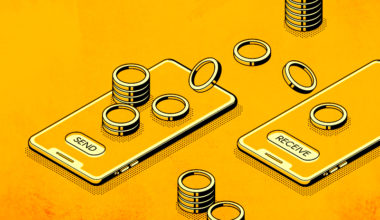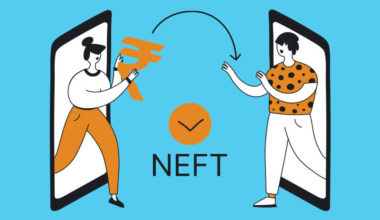Transferring money through net banking can be daunting if you are new to the process. If you are stuck with the question of how to send money through net banking, we are here to guide you through the options available and help you choose the best one. Whether you need to transfer money to a friend or family member, pay bills or make online purchases, net banking provides a convenient and secure way.
Three popular options for transferring money through net banking are NEFT (National Electronic Fund Transfer), RTGS (Real Time Gross Settlement) and UPI (Unified Payments Interface). Each has its own list of advantages and disadvantages, which depends on how much money you need to transfer and how quickly you need it to be processed. Let us get into the details in the next sections.
What is NEFT?
NEFT, or National Electronic Fund Transfer, is a widely used electronic funds transfer system in India that operates on a deferred net settlement basis. Now, wondering what does that mean? It means that transactions are processed in batches every hour instead of being settled individually as they come in.
One of the downsides of NEFT is that it may take up to a few hours for the transaction to be successfully processed and credited to the beneficiary’s account. However, NEFT offers a convenient and reliable way to transfer money through net banking, within India, at a relatively low cost. Moreover, most banks provide NEFT services free of charge, while some may charge nominal fees depending on the amount being transferred.
What are the Steps to Transfer Money through NEFT?
The steps to transfer funds using the NEFT process are as follows:
- Log in to your internet banking account using your credentials.
- Locate and select ‘fund transfer’ or ‘transfer funds’.
- Choose the ‘NEFT transfer’ option.
- Enter the recipient’s bank account details, including the account number, name and the bank’s IFSC code.
- Enter the amount you wish to transfer.
- Review the details and confirm the transaction.
- Once the transaction is processed, you will receive a transaction reference number. Note it down for future reference.
- The funds will be transferred to the recipient’s account as per the NEFT batch timings.
What is RTGS?
RTGS, or Real Time Gross Settlement, is a fast way to transfer large sums of money through net banking. This transfer mode is primarily used for high-value transactions as it allows for immediate funds transfer. If you want to make a transaction above Rs.2 lakh, RTGS is a faster and more effective. RTGS transfers can be processed within 30 minutes, making it the best option for urgent and time-sensitive transactions.
What are the Steps to Transfer Money through RTGS?
Follow the steps given below to transfer funds using the RTGS process:
- Access your internet banking account using your login credentials.
- Navigate to the ‘fund transfer’ or ‘transfer funds’ section.
- Select the option for ‘RTGS transfer’.
- Provide the recipient’s bank account details, including the account number, name and the bank’s IFSC code.
- Enter the amount you want to transfer. (RTGS is suitable for high-value transactions above a certain threshold, as determined by your bank.)
- Verify the entered information and authorise the transaction.
- Upon successful processing, you will receive a unique transaction reference number. Please keep it for future reference.
- The funds will be immediately transferred to the recipient’s account through the RTGS system.
What is UPI?
Unified Payments Interface (UPI) is a relatively new method of transferring funds through net banking that has gained popularity due to its ease of use and convenience. UPI authorises P2P (peer-to-peer) and P2M (peer-to-merchant) transactions. It works on mobile applications, which allow users to transfer funds from one bank account to another without having to enter any bank account details or IFSC codes. You can transfer and receive funds on a real-time basis.
What are the Steps to Transfer Money through UPI?
To send money using UPI, you can follow these general steps:
- Download and install any UPI app from your smartphone’s app store.
- Once installed, open the app and select your preferred language.
- The app will ask you to verify your mobile number, which should be linked to your bank account.
- After verifying your mobile number, you must set a 4-digit passcode to secure your UPI app.
- Next, you’ll be prompted to select your bank from the list of supported banks.
- The app automatically fetches your bank account details using your registered mobile number.
- Once your account is set up, you can start sending money. Select the ‘send money’ option in the app’s interface.
- Enter the recipient’s UPI ID or VPA (Virtual Payment Address).
- After entering the recipient’s UPI ID, you can enter the amount you wish to send.
- Verify the recipient’s details, including their name and UPI ID, to ensure you’re sending money to the right person.
- Finally, enter your UPI PIN, a 4-digit or 6-digit code set by you during the registration process.
- Once the UPI PIN is verified, the money will be instantly deducted from your bank account and will be transferred to the recipients.
Transferring money through net banking has never been easier. You have several alternatives for transferring money through net banking using NEFT, RTGS and UPI services, each with its unique benefits. NEFT is an excellent option for small transactions, while RTGS is ideal for large transactions. Furthermore, the convenience and ease with which UPI works, make it a reliable choice. It is essential to be accurate while entering the details, as an error can lead to delays or even the loss of funds. To guarantee secure and trouble-free transfers, take advantage of your bank’s transaction limits and scheduling features. Choose an option that deems best for you and enjoy the perks of a smooth money transfer process.








